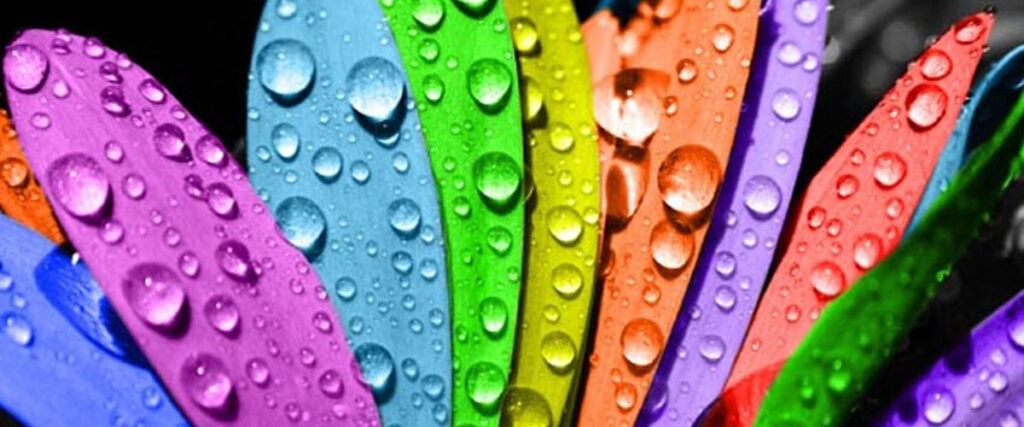Colors are a powerful tool in presentation design, influencing how your audience perceives your message and feels about your content. Different colors evoke different emotions and reactions, making color selection a critical part of your PowerPoint design strategy. Understanding the psychology of color can help you choose the right palette to engage, persuade, and connect with your audience.
Here’s a guide to the psychology of color use in PowerPoint presentations:
1. Red: Attention-Grabbing and Energetic
Red is a high-energy color that immediately draws attention. It’s often associated with excitement, passion, and urgency. However, too much red can feel aggressive, so use it sparingly.
How It Affects Your Audience:
- Creates a Sense of Urgency: Red is commonly used to highlight important information, calls to action, or warnings.
- Increases Energy: Red can stimulate feelings of excitement and intensity, making it ideal for emphasizing key points.
How to Use It:
- Use red to highlight important numbers, urgent messages, or key calls to action.
- Avoid using red for large blocks of text, as it can be overwhelming.
2. Blue: Trustworthy and Calming
Blue is associated with trust, professionalism, and calmness. It’s a popular color in corporate presentations because it conveys stability and reliability.
How It Affects Your Audience:
- Builds Trust: Blue is often used in corporate settings because it fosters a sense of security and trust.
- Calming Effect: Lighter shades of blue can have a soothing, calming effect on your audience.
How to Use It:
- Use blue for backgrounds, headers, or in charts and graphs to convey professionalism.
- Combine blue with contrasting colors like orange or yellow for a balanced design.
3. Green: Growth and Balance
Green is the color of nature and is often associated with growth, harmony, and health. It’s commonly used in presentations related to sustainability, finance, or wellness.
How It Affects Your Audience:
- Represents Growth: Green is perfect for presentations that focus on growth, whether it’s financial, personal, or environmental.
- Promotes Balance: Green has a balancing effect, creating a sense of calm and stability.
How to Use It:
- Use green for financial presentations or topics related to sustainability and the environment.
- Combine green with neutral tones like gray or white for a clean, fresh look.
4. Yellow: Optimism and Attention
Yellow is a bright, cheerful color that evokes feelings of optimism and happiness. It’s an attention-grabber, but it should be used in moderation to avoid overwhelming your audience.
How It Affects Your Audience:
- Inspires Optimism: Yellow can uplift your audience and create a sense of positivity.
- Draws Attention: Like red, yellow is great for emphasizing important information, but it’s less aggressive.
How to Use It:
- Use yellow to highlight key points or to add a sense of warmth and optimism to your presentation.
- Avoid using yellow on white backgrounds, as it can be hard to read.
5. Orange: Creativity and Enthusiasm
Orange is a vibrant, creative color that combines the energy of red with the warmth of yellow. It’s often associated with enthusiasm, creativity, and confidence.
How It Affects Your Audience:
- Stimulates Creativity: Orange can inspire creativity and out-of-the-box thinking, making it ideal for creative industries or brainstorming sessions.
- Conveys Enthusiasm: Orange is a warm and energetic color that can make your presentation feel more exciting and engaging.
How to Use It:
- Use orange for creative presentations or when you want to convey a sense of enthusiasm and innovation.
- Combine orange with neutral tones like gray or blue to balance its vibrancy.
6. Black: Power and Sophistication
Black is a bold, powerful color that conveys elegance and sophistication. It’s often used in formal presentations or to make a dramatic statement.
How It Affects Your Audience:
- Conveys Authority: Black is a strong, authoritative color that can add weight to your message.
- Creates Sophistication: Black is often associated with luxury and exclusivity, making it perfect for high-end presentations.
How to Use It:
- Use black for backgrounds or as an accent color to create a sleek, professional look.
- Be cautious with too much black, as it can feel heavy or oppressive.
7. White: Simplicity and Clarity
White is the color of simplicity and clarity. It creates a clean, modern look and is often used as a background color to provide contrast with other elements.
How It Affects Your Audience:
- Represents Clarity: White gives your presentation a sense of openness and space, making it feel clean and uncluttered.
- Provides Contrast: White backgrounds create a stark contrast with darker colors, making text and images stand out.
How to Use It:
- Use white as a background to create a minimalist, modern look.
- Combine white with bold accent colors to draw attention to key points.
8. Gray: Neutral and Balanced
Gray is a neutral color that represents balance, calmness, and professionalism. It’s often used as a background or accent color in more conservative presentations.
How It Affects Your Audience:
- Creates Neutrality: Gray is non-intrusive and creates a neutral backdrop that doesn’t distract from your content.
- Adds Sophistication: Darker grays can add a level of sophistication and professionalism to your slides.
How to Use It:
- Use gray as a background or accent color in more formal or corporate presentations.
- Combine gray with brighter colors like blue or yellow to add contrast.
Final Thoughts
The psychology of color plays a crucial role in how your audience perceives your PowerPoint presentation. By understanding the emotions and responses associated with different colors, you can choose the right palette to enhance your message and engage your audience. Whether you want to inspire trust with blue, create excitement with red, or convey professionalism with black, using color strategically can make your presentation more effective and memorable.

